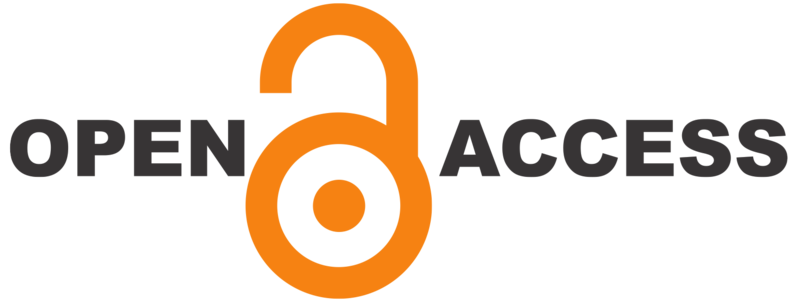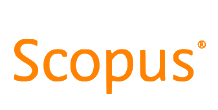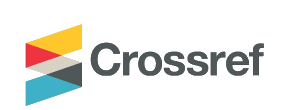Personal development planning and ePortfolios in Speech Pathology:Student and staff perceptions
DOI:
https://doi.org/10.21153/jtlge2016vol7no1art583Keywords:
personal development planning, ePortfolios, employability, speech pathology, career development learningAbstract
This paper describes the evaluation of the use of an ePortfolio which was embedded across a speech pathology program and designed to enhance employability. Personal development planning (PDP) is a key part of employability and includes learning, reflection, goal setting and understanding the wider context. Students’ perceptions of their engagement in this process were evaluated using a mixed methods approach. Qualitative data was collected through student focus groups and individual staff interviews, while quantitative data was collected via a student questionnaire (reported in Lewis & Strampel, 2014). Qualitative data was analysed using NVivo following the six phases of thematic analysis described by Braun and Clarke (2006). This paper reports the themes which emerged from the focus group data. A key finding of the study was that the platform used was not ideal for the ePortfolio purpose causing frustration and negative reactions from students and colouring their engagement with, and enthusiasm for, the ePortfolio activities. Students achieved some of the objectives of personal development planning, especially goal-setting, but it was not until students were in their final year that they saw the links with their future career and employment. Further embedding of key tasks would enhance employability aspects, including for example involving industry from the first year and modelling the PDP process with students.
Metrics
References
Allen, B. & Coleman, K. (2011). The creative graduate: Cultivating and assessing creativity with eportfolios. In G. Williams, P. Statham, N. Brown & B. Cleland (Eds.), Changing demands, changing directions. Proceedings ascilite Hobart 2011 (pp.59–69). Retrieved from http://www.ascilite.org.au/conferences/hobart11/procs/Allen-full.pdf
Australian ePortfolio Project (2009). ePortfolio concepts for academic staff [pamphlet]. Retrieved from http://www.eportfoliopractice.qut.edu.au/docs/AeP_conceptguide_academic_staff.pdf
Bolliger, D. U. & Shepherd, C. E. (2010). Student perceptions of ePortfolio integration in online courses. Distance Education, 31(3), 295–314.
Bower, M. & Hedberg, J. (2009). Educational user interface design. In G. Siemens & C. Fulford (Eds.), Proceedings of World Conference on Educational Media and Technology 2009 (pp. 963-972). Association for the Advancement of Computing in Education (AACE). Retrieved from http://www.editlib.org/j/EDMEDIA/v/2009/n/1/
Braun, V. & Clarke, V. (2006). Using thematic analysis in psychology. Qualitative Research in Psychology, 3(2), 77–101.
Buckley, S., Coleman, J., Davison, I. S., Khan, K., Zamora, J., Malick, S., Morley, D., Pollard, D., Ashcroft, T., Popovic, C., & Sayers, J., (2009). The educational effects of portfolios on undergraduate student learning: A systematic review. Medical Teacher, 31, 282–298.
Career Industry Council of Australia. (2006). Professional standards for Australian career development practitioners. Carton: Author. Retrieved from https://cica.org.au/wpcontent/uploads/Stage2-Consultation-Report-Standards.pdf
CBI/Pearson. (2015). Gateway to growth: CBI/Pearson education and skills survey. Retrieved from http://www.cbi.org.uk/media-centre/press-releases/2014/07/employerswant-education-system-to-better-prepare-young-people-for-life-outside-school-gatesoutside-school-gates-cbi-pearson-survey/
Chau, J. & Cheng, G. (2010). Eportfolio, technology and learning: A reality check. Journal of Interactive Learning Research, 21(4), 465–481. Retrieved from http://0www.editlib.org.library.ecu.edu.au/p/30422
Clegg, S. & Bradley, S. (2006). Models of personal development planning: Practice and processes. British Educational Research Journal, 32(1), 57–76.
Clegg, S. & Bufton, S. (2008). Student support through personal development planning: Retrospection and time. Research Papers in Education, 23(4), 435–450.
Clydesdale, T. (2015). The purposeful graduate: Why colleges must talk to students about vocation. Chicago, IL: The University of Chicago Press.
Eisner, S. (2010). Grave new world? Workplace skills for today’s college graduates. American Journal of Business Education, 3(9), 27–50.
Evers, F. T., Rush, J. C., & Berdrow, I. (1998). The Bases of Competence: Skills for lifelong learning and employability. San Francisco, CA: Jossey-Bass Publishers.
Fabris, C. (2015). In an evolving career landscape, how should colleges prepare students? The Chronicle of Higher Education. Retrieved from http://chronicle.com/article/In-anEvolving-Career/151345/
Faulkner, M., Aziz, S., Waye, V., & Smith, E. (2013). Exploring ways that ePortfolios can support the progressive development of graduate qualities and professional competencies. Higher Education Research & Development, 32(6), 871–887.
Gardner, K. M. & Aleksejuniene, J. (2008). Quantitative and qualitative analysis of student feedback on ePortfolio learning. Journal of Dental Education, 72(11), 1324–1332.
Garrett, B. M., MacPhee, M., & Jackson, C. (2013). Evaluation of an eportfolio for the assessment of clinical competence in a baccalaureate nursing program. Nurse Education Today, 33(10), 1207–1213.
Gordon, J. A. & Campbell, C. M. (2013) The role of ePortfolios in supporting continuing professional development in practice. Medical Teacher, 35(4), 287–94. doi: 10.3109/0142159X.2013.773395.
Hager, P., Holland, S., & Skilbeck, M. (2007). Graduate attributes, learning and employability. Dordrecht, Netherlands: Springer. doi:eISBN: 9781402053429
Hrisos, S., Illing, J. C., & Burford, B. C. (2008). Portfolio learning for foundation doctors: Early feedback on its use in the clinical workplace. Medical Education, 42(2), 214–223.
Housego, S. & Parker, N. (2009). Positioning ePortfolios in an integrated curriculum. Education & Training, 51(5/6), 408–421.
Lewis, A. & Strampel, K. (2014). Demonstrating competency through an ePortfolio: Student perceptions. Journal of Clinical Practice in Speech Language Pathology, 16(3), 139–146.
Mann, K., Gordon, J., & MacLeod, A. (2009). Reflection and reflective practice in health professions education: A systematic review. Advances in Health Sciences Education, 14(4), 595–621.
McIlveen, P., Brooks, S., Lichtenberg, A., Smith, M., Torjul, P., & Tyler, J. (2011). Career development learning frameworks for work-integrated learning. In S. Billett & A. Henderson (Eds.), Developing learning professionals: Integrating experiences in university and practice settings (pp. 149–165). Dordrecht, Netherlands: Springer.
Mouza, C. & Lavigne, N. C. (2013). Chapter 1: Introduction to emerging technologies for the classroom: A learning sciences perspective. In N.C. Lavigne & C. Mouza (Eds.), Emerging technologies for the classroom: A learning sciences perspective (pp. 1–12). New York, NY: Springer.
Moran, W., Vozzo, L., Reid, J. A., Pietsch, M., & Hatton, C. (2013). How can technology make this work? Preservice teachers, off-campus learning and digital portfolios. Australian Journal of Teacher Education, 38(5), 115–130.
Nilson, L. B. (2013). Creating self-regulated learners: Strategies to strengthen students’ selfawareness and learning skills. Sterling, VA: Stylus.
Peet, M., Lonn, S., Gurin, P., Boyer, K. P., Matney, M., Marra, T., Himbeault Taylor, S., & Daley, A. (2011). Fostering integrative knowledge through ePortfolios. International Journal of ePortfolio, 1(1), 11–31.
Penny Light, T., Chen, H. L., & Ittelson, J. C. (2012). Documenting learning with ePortfolios. San Francisco, CA: Jossey-Bass.
QAA. (2013). Higher Education Review: Themes for 2013-15. QAAHE: Gloucester. Retrieved from http://www.qaa.ac.uk/en/Publications/Documents/higher-educationreview-themes.pdf
Richards-Schuster, K., Ruffolo, M. C., Leyda Nicoll, K., Distelrath, C., & Galura, J. A. (2014). Using ePortfolios to assess program goals, integrative learning, and civic engagement: A case example. International Journal of ePortfolio. 4(2), 133–141.
Rhodes, T. L. (2008). VALUE: Valid assessment of learning in undergraduate education. New Directions for Institutional Research, 2008(S1), 59–70. doi: 10.1002/ir.262.
Speech Pathology Australia. (2011). Competency-based occupational standards for speech pathologists (CBOS), entry level. Melbourne, Australia.
Tertiary Education Quality and Standards Agency TEQSA. (2011). Higher Education Standards Framework. Retrieved from https://education.gov.au/final-proposed-highereducation-standards-framework.
Walden, P. (2010). Student perceptions of learning speech science concepts in a hybrid environment. Pennsylvania Speech-Language-Hearing Association (PSHA) Journal, 41, 30–40.
Ward, R. (2006). Introduction. In M. Yorke (Ed.) Personal development planning and employability. Learning and employability, Series Two. The Higher Education Academy. Retrieved from https://www.heacademy.ac.uk/sites/default/files/pdp_and_employability_jan_2009.pdf
Watson, D. & Amoah, M. (2007). The Dearing Report: Ten years on. London: Institute of Education.
Watts, A. G. (2006). Career development learning and employability. Heslington, England: The Higher Education Academy.
Woodley, C. & Sims, R. (2011). Eportfolios, professional development and employability: Some student perceptions. Campus-Wide Information Systems, 28(3), 164–174.











